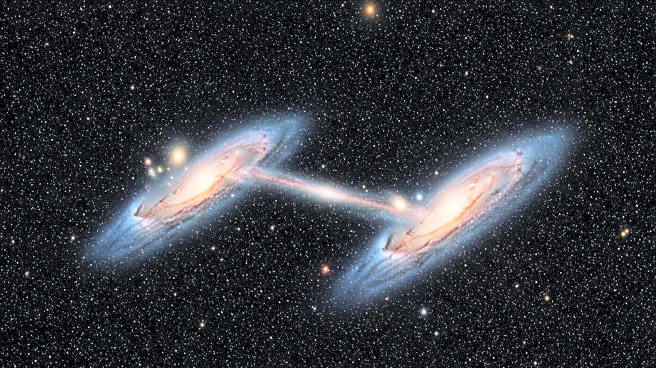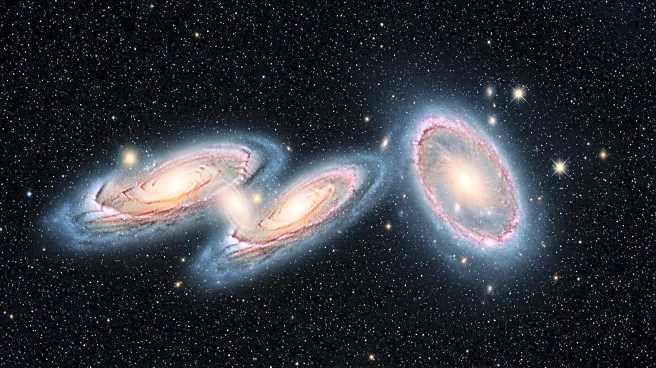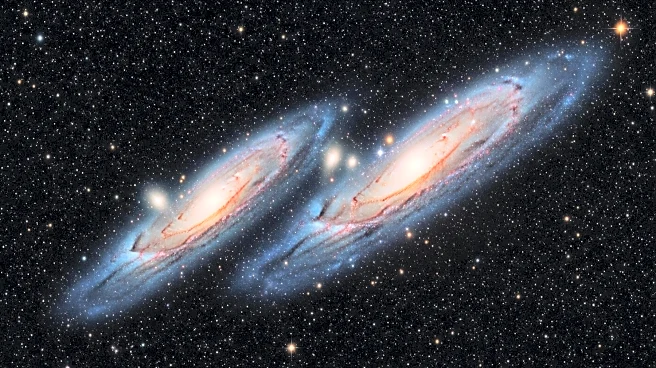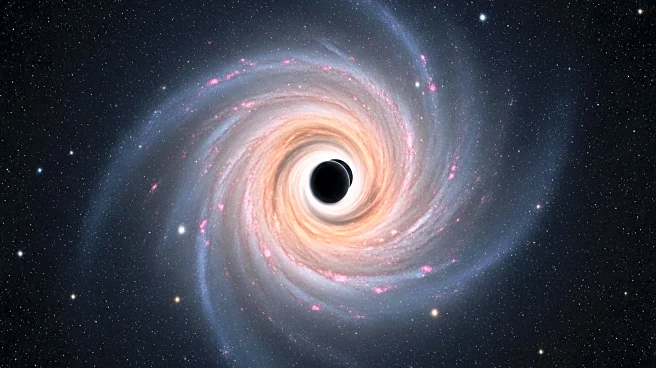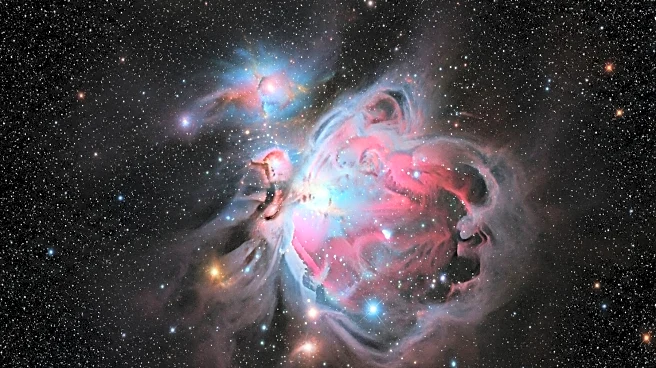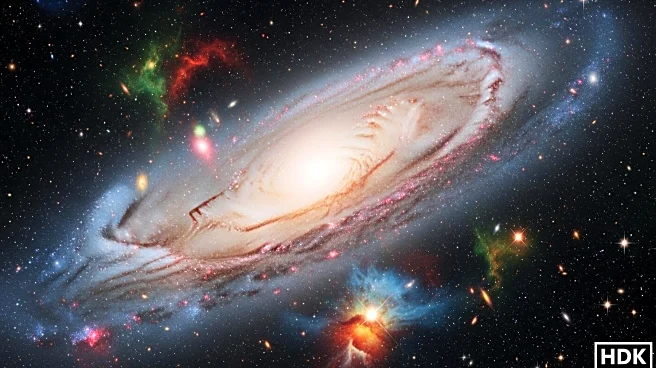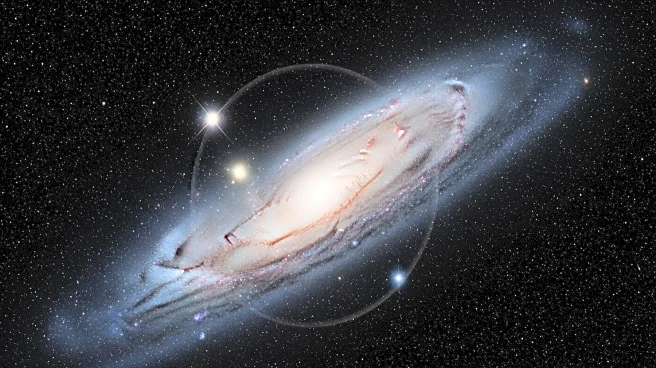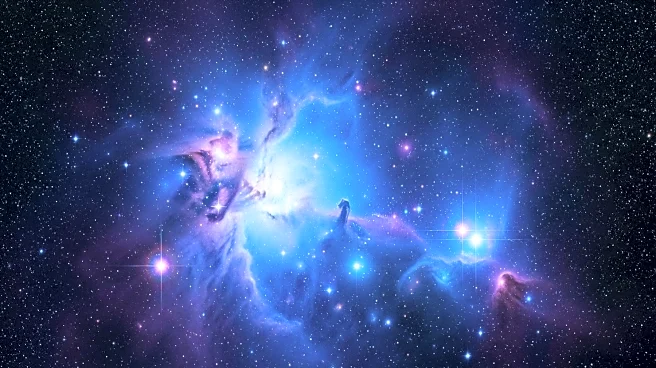What's Happening?
Astronomers have discovered a massive gas bridge linking two galaxies, NGC 4532 and DDO 137, located on the outskirts of the Virgo Cluster. This structure, extending 185,000 light-years, is the longest of its kind ever observed. The discovery was made using radio maps that trace cold hydrogen gas, revealing a bridge and a long tail stretching into intergalactic space. The study, led by Professor Lister Staveley-Smith, highlights the role of tidal forces and ram pressure in shaping the gas dynamics between these galaxies. The findings provide new insights into the interactions between galaxies and their environments.
Why It's Important?
This discovery is significant as it sheds light on the processes that shape galaxies and their interactions with surrounding environments. The presence of such a massive gas bridge suggests that even galaxies on the periphery of a cluster can experience significant environmental influences. Understanding these interactions is crucial for comprehending galaxy evolution and the distribution of matter in the universe. The findings also offer a local analog to the Magellanic Clouds near the Milky Way, providing a comparative framework for studying similar cosmic phenomena.
Beyond the Headlines
The study of this gas bridge offers deeper insights into the role of environmental factors in galaxy evolution. The interaction between tidal forces and ram pressure not only affects the distribution of gas but also influences star formation processes. The discovery underscores the importance of considering both local and large-scale cosmic interactions in understanding galaxy dynamics. Additionally, the research highlights the potential for stripped material to seed new star systems, contributing to the ongoing cycle of cosmic evolution.

